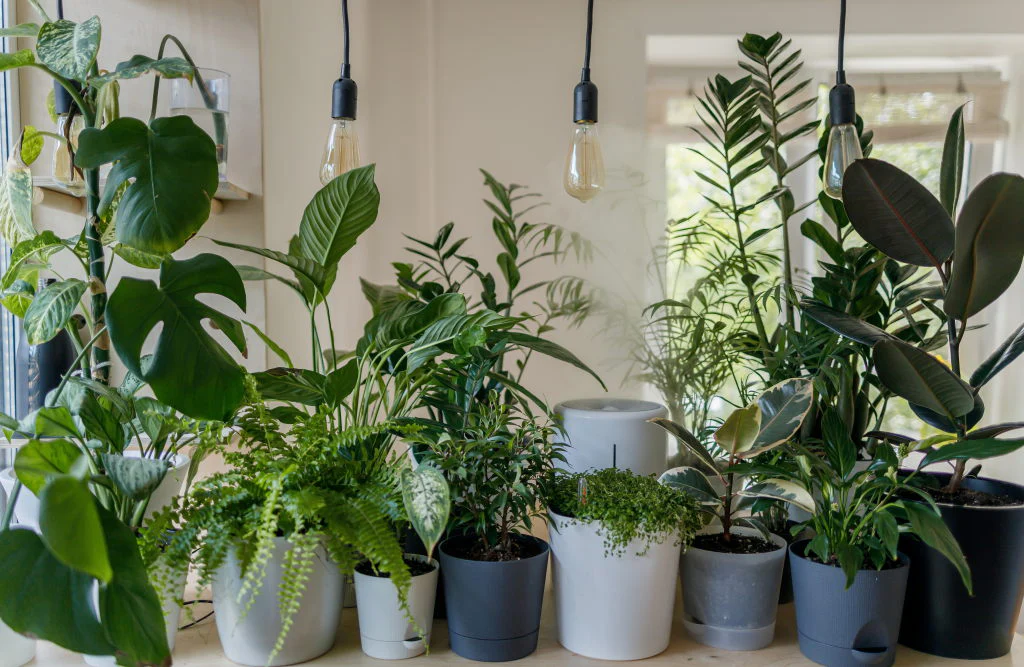Using Grow Lights for Indoor Plants: A Comprehensive Guide :
Introduction
Indoor gardening has surged in popularity, allowing enthusiasts to cultivate greenery year-round regardless of outdoor conditions. Grow lights play a pivotal role in ensuring these plants thrive by providing the necessary light spectrum for photosynthesis. In this guide, we delve into the intricacies of using grow lights for indoor plants, offering insights into types of lights, optimal usage techniques, and the benefits they bring to your indoor garden.
Types of Grow Lights
Choosing the right grow lights is crucial for the health and growth of your indoor plants. Here are the main types to consider:
1. Fluorescent Grow Lights
Fluorescent lights are popular among beginners for their affordability and versatility. They emit a balanced spectrum of light suitable for most plants, making them ideal for herbs, leafy greens, and seedlings.
2. LED Grow Lights
LED lights have revolutionized indoor gardening with their energy efficiency and customizable spectrum options. They provide specific wavelengths of light tailored to different growth stages, promoting robust growth and flowering in a variety of plants.
3. High-Intensity Discharge (HID) Grow Lights
HID lights, including metal halide (MH) and high-pressure sodium (HPS) bulbs, are favored for their intense light output, making them suitable for large or fruit-bearing plants that require high light intensity.
Choosing the Right Light Spectrum
Different plants have varying light requirements. Understanding the light spectrum helps you match the right grow lights to your plants’ needs:
Blue Spectrum (Cool Light): Ideal for promoting vegetative growth and keeping plants compact. Suitable for leafy greens and herbs.
Red Spectrum (Warm Light): Enhances flowering and fruiting stages by stimulating reproductive growth. Best for flowering plants and fruit-bearing varieties.
Optimal Placement of Grow Lights
Proper positioning of grow lights ensures uniform light distribution and prevents plants from becoming leggy or stunted. Consider these tips:
Distance: Maintain the recommended distance between the light source and plants to avoid light burn or insufficient lighting.
Coverage: Position lights strategically to cover all plants evenly, adjusting height as plants grow.
Best Practices for Using Grow Lights
Achieving success with grow lights involves more than just installing them. Follow these best practices for optimal results:
Lighting Schedule: Establish a consistent lighting schedule mimicking natural daylight hours. Most plants thrive with 12-16 hours of light per day.
Rotation: Rotate plants regularly to ensure all sides receive equal exposure to light, promoting balanced growth.
Benefits of Grow Lights
Investing in quality grow lights offers several benefits to indoor gardeners:
Year-Round Cultivation: Extend the growing season and cultivate plants regardless of outdoor conditions.
Controlled Environment: Maintain control over light intensity and spectrum, optimizing conditions for plant growth.
Enhanced Plant Health: Provide plants with the light they need to thrive, resulting in healthier foliage, stronger stems, and vibrant blooms.
Conclusion
Incorporating grow lights into your indoor gardening setup opens a world of possibilities for cultivating a thriving garden year-round. Whether you’re nurturing herbs in the kitchen or tending to tropical plants in the living room, understanding how to effectively use grow lights ensures your plants receive the light they need for optimal growth and development.

